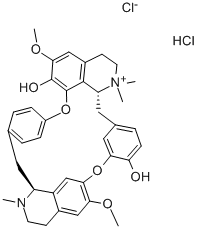The name curare is derived from the native Guyana Mukusi
Indian word wurari. In 1596, Sir Walter Raleigh referred to
curare in The Discovery of the Large, Rich, and Beautiful Empire of
Guiana. In 1780, Abbe Felix Fontana identified the action of
curare on voluntary muscles. In 1800, Alexander von Humboldt
described the extraction of curare. In 1811, Sir Benjamin
Collins Brodie determined that complete recovery from curare
poisoning is possible provided artificial ventilation is maintained.
In 1825, Charles Waterton brought curarep to Europe,
and in 1835 Sir Robert Hermann Schomburgk classified and
named the vine Strychnos toxifera. In 1850, George Harley
demonstrated that curare could be used to treat tetanus and
strychnine poisoning. By 1868, Claude Bernard and Alfred
Vulpian had identified the site of action of curare as the motor
end plate. From 1887, curare was marketed for medical use by
Burroughs Welcome. In 1900, Jacob Pal recognized that
physostigmine could be used to antagonize the effects of
curare. In 1912, Arthur Lawen demonstrated the use of curare
during surgery, but this potential was not realized as the finding
was published in German. In 1914, Henry Hallett Dale described the action of acetylcholine. In 1935, Harold King
isolated D-tubocurarine and described its structure, while in
1936 Dale revealed the role of acetylcholine in neuromuscular
transmission and the mechanism of action for curare. In 1940,
Abram Elting Bennett revealed that curare could be used to
reduce trauma during metrazol-induced convulsive therapy for
spastic disorders in children. In 1942, Harold Griffith and Enid
Johnson used curare to augment general anesthesia when
performing an appendectomy. Curare was used surgically until
the development of safer synthetic neuromuscular blocking
analogues such as Pancuronium (in 1964), Vecuronium
(in 1979), Mivacurium (in 1993), and Rocuronium (in 1994).

